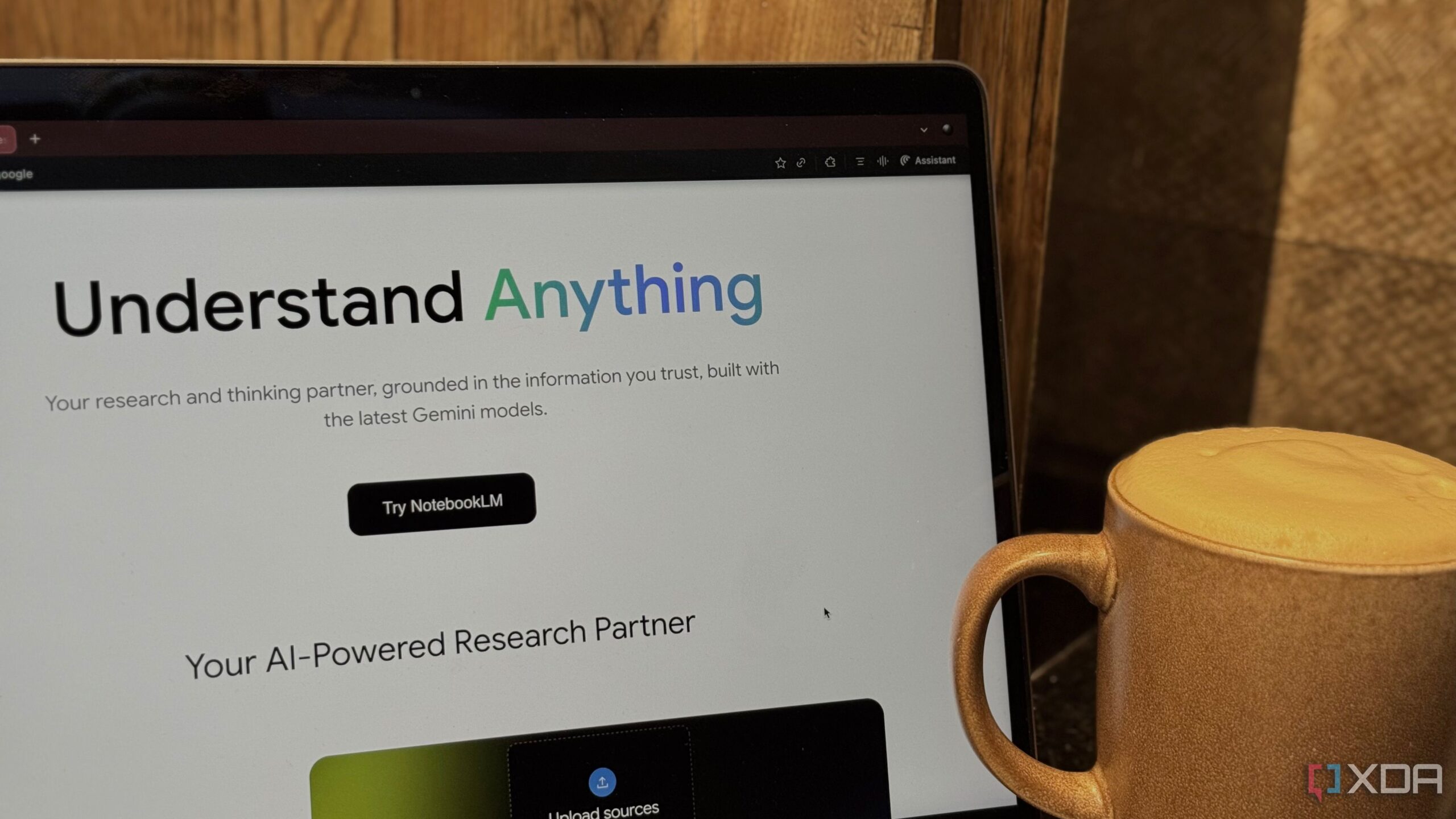Science
Users Urged to Rethink Google’s NotebookLM as a Note-Taking Tool

Google’s NotebookLM has gained attention not just as a study tool but as a versatile assistant for various tasks. However, many users mistakenly treat it as a note-taking app. Its name may suggest otherwise, but a deeper understanding reveals that its primary function is as an AI research assistant.
At its core, NotebookLM is designed to enhance research efficiency. The tool does not present a blank page for users to jot down thoughts; instead, it requires input from users. According to Google, NotebookLM is described as an “AI Research Tool and Thinking Partner.” This indicates its intended role in aiding users to think critically and optimize their research processes.
The lack of a traditional note-taking interface is a significant aspect of NotebookLM. In contrast to typical note-taking applications, which feature dedicated spaces for organizing ideas, NotebookLM operates differently. It does not greet users with a blank page but instead awaits the information users upload to it. This approach allows for the transformation of uploaded sources into various engaging formats, such as podcasts or organized reports. However, it is essential to note that gathering information occurs before using NotebookLM, which diverges from conventional note-taking practices.
Limitations in Organization and Structure
One of the critical drawbacks of NotebookLM is its lack of an effective organization system. Traditional note-taking apps are popular because they provide structures such as folders, tags, and notebooks, allowing users to categorize and retrieve their ideas easily over time. NotebookLM, on the other hand, offers minimal organizational features. Users must create individual notebooks for each project, which do not function like folders in other applications.
While it is possible to manage multiple notebooks, it can quickly become cumbersome. Users have to manually decide how to categorize their sources, leading to potential disarray. For example, a student managing six courses may find themselves creating separate notebooks for each subject, complicating the tracking of materials and ideas.
The absence of subfolders and tagging capabilities means that organizing information within NotebookLM is a manual effort. This limitation can hinder users who prefer a seamless method for managing their research and notes.
Potential for Integration with Other Tools
While NotebookLM may not excel as a standalone note-taking app, it can complement existing note-taking workflows. Users can integrate NotebookLM with other platforms like Notion or Evernote to enhance their productivity. By doing so, they can leverage NotebookLM’s capabilities for research while still maintaining the organizational benefits of traditional note-taking applications.
For instance, a Computer Science student could upload lecture slides to a designated NotebookLM notebook, using the tool for deeper exploration of topics. Although the Notes feature allows for some basic formatting and idea capture, it lacks the comprehensive capabilities of dedicated note-taking apps.
Ultimately, while NotebookLM can be adapted for note-taking, it requires a specific workflow that may not feel intuitive compared to more traditional options. Users who prefer a more structured approach may find it beneficial to pair NotebookLM with their preferred note-taking applications to achieve a balance between research and organization.
As NotebookLM continues to evolve, it remains important for users to recognize its strengths and limitations. Understanding its primary function as a research tool can help users optimize their experience and utilize it effectively in conjunction with other platforms.
-

 Science2 weeks ago
Science2 weeks agoResearchers Challenge 200-Year-Old Physics Principle with Atomic Engines
-

 Entertainment1 week ago
Entertainment1 week agoSyracuse Stage Delivers Lively Adaptation of ‘The 39 Steps’
-

 World2 weeks ago
World2 weeks agoGlobal Military Spending: Air Forces Ranked by Budget and Capability
-

 Politics2 weeks ago
Politics2 weeks agoNHP Foundation Secures Land for 158 Affordable Apartments in Denver
-

 Politics6 days ago
Politics6 days agoHamas Chief Stresses Disarmament Tied to Occupation’s End
-

 Politics7 days ago
Politics7 days agoNFL Confirms Star-Studded Halftime Show for Super Bowl LVIII
-

 World1 week ago
World1 week agoBoeing’s Aircraft Production: Assessing Numbers and Challenges
-

 Lifestyle1 week ago
Lifestyle1 week agoTrump’s Push to Censor National Parks Faces Growing Backlash
-

 Lifestyle1 week ago
Lifestyle1 week agoRed Bluff High School’s Elli Nolan Named Rotary Student of the Month
-

 Health2 weeks ago
Health2 weeks agoNeuroscientist Advocates for Flag Football Until Age 14
-

 Top Stories7 days ago
Top Stories7 days agoFederal Agents Detain Driver in Addison; Protests Erupt Immediately
-

 Top Stories1 week ago
Top Stories1 week agoUrgent Search for Suspect Who Exposed Himself to Teen Girl









